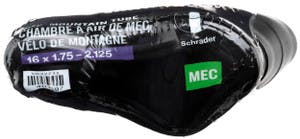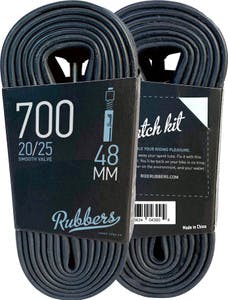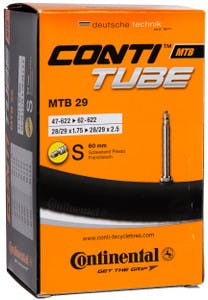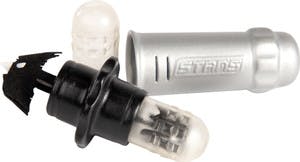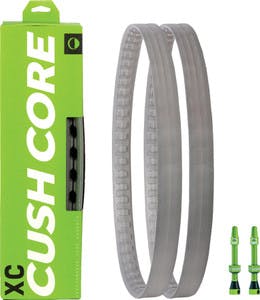Bike tubes and tire liners
- (0)49N 700 x 28-35C Tube (48mm Presta Valve)$10.95
- (0)MEC 26 x 1.75-2.125in. Tube (Presta Valve 48mm)$7.95
- (0)Pirelli Cinturato All Road Gravel 700C Tubeless Folding Tire$87.99
- (0)49N 700C x 28-35 Tube (Schrader Vale 40mm)$9.99
- (0)MEC 26 x 1.75-2.125in. Tube (Schrader Valve)$7.95
- (0)MEC 24 x 1.75-2.125in. Tube (Schrader Valve)$5.95
- (0)MEC 29 x 2.00-2.40in. Tube (Presta Valve 48mm)$7.95
- (0)Rubbers 26 x 2.0-2.4in. Tube (35mm Schrader Valve)$8.45
- (0)49N 700 x 28-35C Tube (60mm Presta Valve)$11.95
- (0)MEC 700 x 35-44C Tube (48mm Presta Valve)$6.95
- (0)MEC 700 x 23-28C Tube (48mm Presta Valve)$6.95
- (0)MEC 27.5 x 1.75-2.125in. Tube (Presta Valve 48mm)$7.95
- (0)49N 700C x 23-28 Tube (Schrader Valve 40mm)$6.49
- (3)MEC 16 x 1.75-2.125 Tube Schrader Valve$1.93$4.95
- (0)Rubbers 26 x 1.71-2.1in. Tube (Schrader Valve)$10.95
- (0)49N 26 x 1.95-2.40 (Schrader Valve 40mm)$7.19
- (1)MEC 700 x 28-32C Tube (48mm Presta Valve)$6.95
- (0)49N 700 x 23-28C Tube (48mm Presta Valve)$9.95
- (0)MEC 700 x 28-32C (27 x 1 1/4in) Tube Schrader Valve$6.95
- (0)MEC 20 x 1.75-2.125in. Tube (Schrader Valve)$5.95
- (0)Rubbers 20" x 3.5-4.0" E-bike/Fat Tire (35mm Schrader Valve)$9.94$18.95
- (2)MEC 700 x 28-32C Tube (60mm Presta Valve)$6.95
- (1)MEC 700 x 23-28C Tube (60mm Presta Valve)$6.95
- (0)49N 700 x 35-50C Tube (48mm Presta Valve)$11.95
- (0)MEC 700 x 35-44C Tube (60mm Presta Valve)$6.95
- (0)Rubbers 700 x 20-25 Tube (48mm Presta Valve)$10.95
- (0)Muc-Off V2 Tubeless Presta Valves$54.95
- (0)Continental 29 x 1.75-2.5 Tube (60mm Presta Valve)$15.95
- (0)Continental 29 x 1.75-2.5in. Light Tube (42mm Presta Valve)$15.95
- (0)49N 29 x 1.95-2.4in. Tube (48mm Presta Valve)$13.99
- (0)MEC 27.5 x 2.00-2.40in. Tube (Presta Valve 48mm)$7.95
- (0)49N 26 x 1.95-2.40in. Tube (Presta Valve 48mm)$9.95
- (2)Stan's No Tubes DART Tubeless Patch Kit$36.95
- (1)MEC 700 x 35-44C Tube (Schrader Valve)$6.95
- (0)49N 20 x 1.95-2.40in. Tube (Schrader Vale 40mm)$7.99
- (0)Teravail 29 x 2.0-2.4in. Tube (48mm Presta Valve)$12.95
- (0)MEC 16 x 1.75-2.125in. Tube (Schrader Valve)$5.95
- (0)Cushcore XC Tire Inserts with Valve set$138.93$229.95
- (2)MEC 12.5 x 1.75-2.125 45 degree Tube Schrader Valve$4.93$4.95
- (1)MEC 29 x 1.75-2.125in. Tube (Presta Valve 48mm)$7.95
- (0)49N 27.5 x 1.95-2.40 Tube (Presta Vale 48mm)$11.99
- (0)49N 29 x 1.95-2.40 Tube (Schrader Vale 40mm)$9.95
- ‹
- 1
- ›
Compare (0)
Bike tubes and liners to help you with your ride
Bike tubes are the inflatable inner part of a bicycle tire that holds air and cushions your ride. Found inside most non-tubeless tires, a bike tube is usually made from butyl rubber or latex and is inflated through either a Presta or Schrader valve. Tubes come in different sizes to match various wheel diameters and tire widths, so it’s important to choose one that fits your setup. If the tube is too big or too small for your tire, it can affect performance and increase the risk of flats.
Why bike tubes matter
Bike tubes provide the pressure needed to support your weight and keep the tire’s shape, whether you're riding on pavement, gravel or dirt. Most flats happen because of a puncture in the tube, not the tire itself. That’s why many cyclists carry a spare tube or patch kit to make quick repairs on the go.
What is a tire liner?
Tire liners are thin strips of flexible material placed between the tube and the inside of the tire. They act as a protective barrier, helping to shield the tube from sharp objects like thorns, glass or jagged rocks. Liners are a simple and effective way to reduce the chances of punctures, especially on rugged trails or in urban areas.
MEC has plenty of bike tubes and tire liners from reliable brands like MEC Label, Rubbers and more.
Frequently asked questions
How do I know what size bike tube I need?
Tube size is based on your wheel diameter and tire width, which are usually printed on the side of your tire. A common road bike size might be 700 × 28 C, while mountain bikes often use sizes like 29 × 2.2. Make sure the tube size matches your tire specs for a proper fit and safe ride.
Can I patch a bike tube or should I replace it?
You can patch a tube if the hole is small and the rest of the tube is in good shape. Patching is a good backup when you're on the trail or road, but if your tube has multiple holes or looks worn, it’s best to replace it.
Are tire liners necessary?
Even with tough tires, small debris can still find its way through. Liners add an extra layer of defence, especially useful for city commuting, gravel riding or long-distance touring where a flat can be a big inconvenience.
Bike tubes and tire liners buyer’s guide
Pick the right size
The first step is matching the tube to your wheel and tire. Check the sidewall of your tire for numbers like “700 × 28 C” or “29 × 2.4” – these indicate the diameter and width range your tube needs to match. A tube that’s too small or too large won’t hold pressure properly and could lead to flats or poor performance.
Choose your valve type
Bike tubes come with either a Presta or Schrader valve. Presta valves are slimmer and typically used on road bikes or performance setups. Schrader valves are wider and common on mountain or hybrid bikes. It’s important to match the valve type to the hole in your rim.
Think about your riding style
If you’re a daily commuter or long-distance rider, go for durable tubes designed for higher puncture resistance. Weight-conscious road cyclists may prefer lightweight latex tubes, while casual riders often stick with standard butyl rubber for durability and value.














